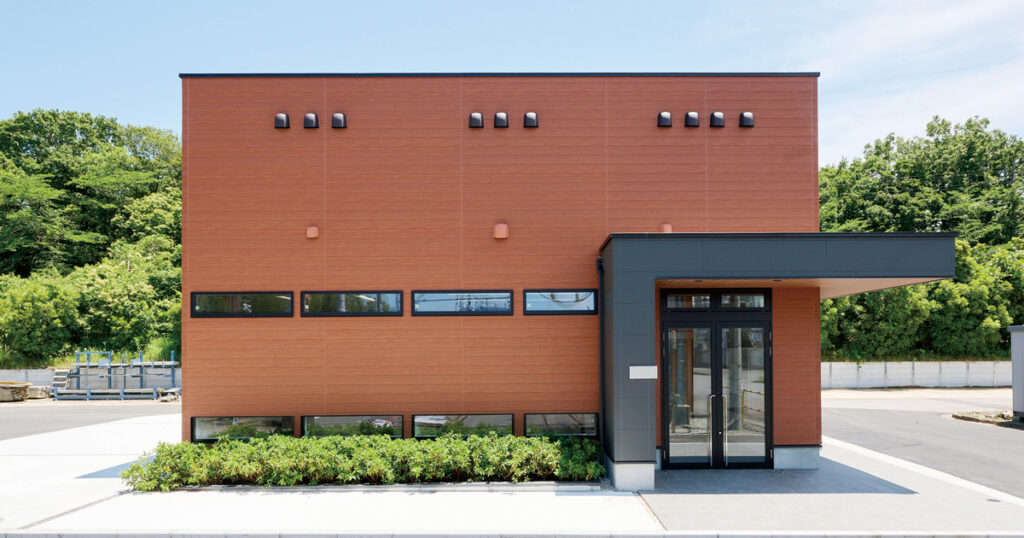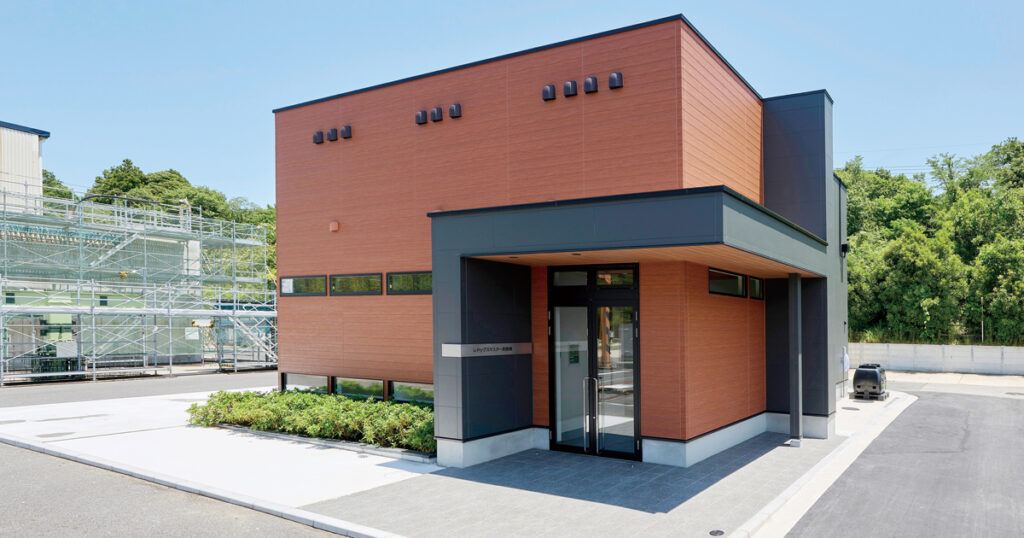Environmentally friendly buildings
The RedoxMaster Experimental Building is a building that incorporates various eco-friendly technologies to achieve sustainability, such as photovoltaic power generation equipment and environmentally friendly BF concrete (CELBIC)*1, in addition to the selection of environmentally friendly wooden construction technologies with a high degree of design flexibility, such as “laminated wood lattice posts + large section laminated wood beams” by Polatech Corporation (Headquarters: Koshigaya City, Saitama Prefecture; President: Kojiro Nakauchi). In addition to the third-party BELS certification based on the notification of the Ministry of Land, Infrastructure, Transport and Tourism, the building has also acquired ZEB certification. *1 Concrete in which a portion of ordinary Portland cement is replaced by blast furnace slag fine powder.


Building Overvie
Primary purpose of use: Research facilities
Type of structure: Wooden building
Number of storeys: Single storey
Building area: 121.27 ㎡
Total floor space: 109.51 ㎡
Maximum height: Ground level + 6.650 m
Eaves height: Ground level + 5.743 m
Type of foundation: Mat foundation
Utilisation of the Redox Master Experimental Building
The RedoxMaster experimental building is equipped with two small RedoxMaster plasma ion dryers (one vertical and one horizontal) manufactured by Glencal Technology Co. Ltd.,(Head office: Chiyoda-ku, Tokyo; President: Masahito NAKAISHI), of which TEKKEN CORPERATION is one of the shareholders. These experimental machines are used to conduct tests how to upcycle by-products from food residues and other waste to construction materials such as recycled concrete. At the same time, this experimental building also serves as a showroom where the actual operation of the RedoxMaster dryer can be observed.
TEKKEN CORPOEATION will continue to promote the development of environmentally friendly technologies and contribute to the realisation of a sustainable society.
Narita RedoxMaster Experimental Facility Building reduces CO2 emission by adopting wood construction and wood-based materials. The advantages of using wood construction and wood-based materials are as follows.
・Compared with iron reinforced concrete buildings, wood buildings reduce CO2 generation during material production and demolition and disposal.
・To achieve the aim to reduce greenhouse gas emissions to virtually zero by 2050, we promote afforestation and recycle waste wood.
・Tackling the environmental problem by using woods will increase the value of the company.
・The use of woods in the construction of buildings can reduce the tax base price and property tax.
・In the laboratory, a semi-fire-proof structure (laminated timber posts + large cross section laminated timber beams) and a conventional structure (laminated timber posts + large cross section laminated timber beams) can be observed. These structures are not normally visible from the outside after construction is completed, but by making them visible, customers who wish to build wooden buildings in urban areas where fire resistance is required can visit the facility and understand the differences.
・The exterior is made of wood siding.
Other environmental considerations
・Environmentally friendly BF concrete* (CELBIC) is used for the foundation concrete.
Environmentally friendly BF concrete* (CELBIC)
Ensuring the quality required for building concrete structures and to contribute to the formation of a recycling-oriented society and the improvement of global environmental problems, CELBIC is a concrete made with ordinary Portland cement and blast furnace slag powder, with the aim of contributing to the formation of a recycling-oriented society and the improvement of global environmental problems.
